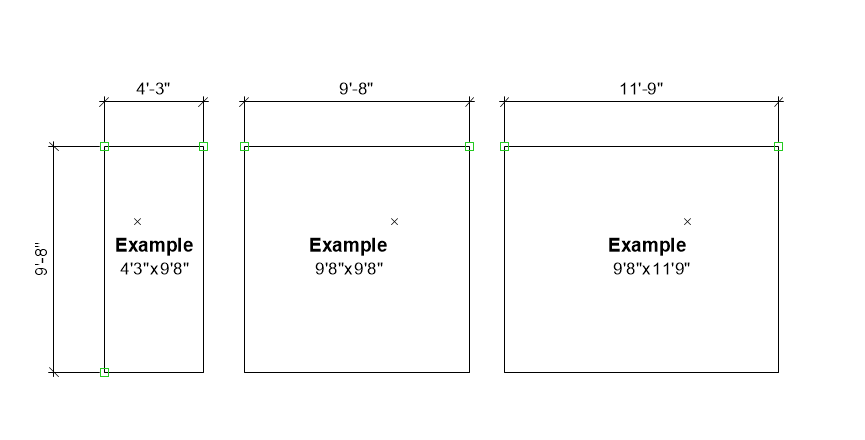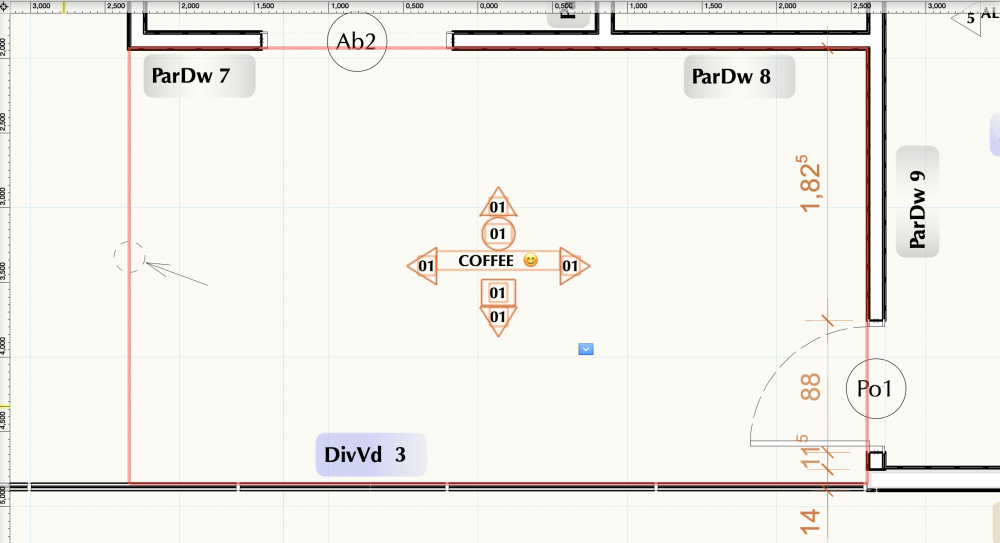
Silvano
-
Posts
40 -
Joined
-
Last visited
Content Type
Profiles
Forums
Events
Articles
Marionette
Store
Posts posted by Silvano
-
-
-
OK, now. Thanks, rDesign!
-
Does anyone use crowd:it? It looks great, but I installed it and Mac OS won't open it, not even in "open with..."; it returns that it "can't check for malware".
-
You can try the function: =GETSPACENAMEFOROBJ
-
The problem may not be with the VW, but with your e-mail service or your computer's configuration for it. It's easier to do the mailto in an e-mail message, but it's a good idea for some designs (thanks for that).
In the same way as the hyperlink to Google Maps photos,
you can try this in VW:
1) Create the mailto code, with short texts;
someone, like me, can use a free online service and copy it:
http://www.cha4mot.com/t_mailto.html
https://codepen.io/tomhodgins/pen/JXELMx2) Create and transform an image (your logo?)
with an e-mail address or a "click and send me a reply" text
into a page-based symbol, without grouping it;
Click on the Hyperlink tool;
Click on your Preferences in the toolbar;
In the Hyperlink panel that opens, choose:
Layout > Symbol: choose your logo;
Label field: leave it blank or type a text (your e-mail?);
Function popup: Open web page;
Web page field: paste the miracle link;
Click OK.3) Place a symbol with the hyperlink in the design layer;
Export the file to pdf and test the link.4) Tell me if you like Vectorworks better now.
-
 1
1
-
-
The mailto protocol works perfectly for me. If you to need,
you just have to overcome the parapsychological mysteries of VW.
The dark mysteries specific to the Hyperlink tool are:
1) don't test the link on the object's OIP because it won't work;
2) don't test the link by clicking on the object, it won't work;
3) just like that, have faith and export the vwx file to pdf;
4) open the pdf carefully, cross your fingers and click on the link;
5) observe the phenomenon and record any unusual occurrences;
6) if you hear or feel anything strange, please report your experience.Suggestion:
If it's ok, send it by e-mail of a friend to respond it,
because maybe he receive an alert of spam or danger
(did you feel that?); you can let your client know about it.-
 1
1
-
-
Maybe you might like to change the record format field types to "submenu" and define for each of them a list of channel names; this produces options popups in the OIP, to change in each instance. As for a script, and another questions I can't help you. I wish that many channels are equals.

-
The IFC specification use the CamelCase naming convention for the property set definitions and not the Kebab Case: "… start with the prefix "Pset_" and continue with the English words in CamelCase naming convention" (buildingSMART).
-
No issues with 2023 sp4 on Ventura 13.2.1, on a MacBook Pro M2, even with PIOs. A simple suggestion, for those who haven't already done so, could be to change the complex configuration of the eyedropper and save some configurations with different amounts and types of attributes, to facilitate your workflow and maybe solve some problem. Does this make tool operation lighter? If it's a bug, it might be useless.
-
Maybe you might like this too.
https://forum.vectorworks.net/index.php?/files/file/261-2d-to-massing-model/ -
Oh, sorry for the glitch, I didn't use recalculate all sheets because I had a slow processor before and now I haven't tested enough. We learned a little more from you today.
Thank you Pat Stanford. -
Try it:
1. Select the name of the worksheet on the resource manager and copy it.
2. Place this worksheet in the drawing.
3. In the OIP of this worksheet, paste the name on the Name field and add a number, a caracter or resume it.
4. Clic twice on the worksheet in the drawing.
5. Clic on an apropriate cell for the name and type:
=Name(sel=true)
Clic the checkmark. -
5 hours ago, Marc Davies said:
Ah, desculpa Silvano. Sim, perdi a palavra “TYPE” na sua resposta. Isso é exatamente o que eu tive que fazer. 🙂
Marc Davies, as you saw, this solution would be temporary, just to work, because you have to type again every time you change areas. Your problem is important and I would also like a better solution.
-
Until the experts arrive:
Click on the % column header. Type it:
=(click on the areas header)*100/(TYPE the total area) -
2 hours ago, jeff prince said:
Eu gosto de revisitar minhas antigas assinaturas de tópicos periodicamente e ver como a conversa evoluiu...
Eu me pergunto como a empresa Vectorworks está pensando sobre isso. Como empresa, eles devem querer ganhar participação de mercado. À medida que mais pessoas se movem em direção a um fluxo de trabalho BIM , você esperaria que o fruto mais fácil fosse a conversão de usuários do AutoCAD, pelo menos esse é o caso no mundo da arquitetura paisagística.
Em minha experiência ensinando empresas e indivíduos como migrar do AutoCAD para o Vectorworks, o maior risco de tropeçar é essa nomenclatura de camada e interface do usuário. As pessoas se adaptam à interface do usuário mais rapidamente do que a nomenclatura Layer, novamente ... na minha experiência. Provavelmente tem a ver com a memória das mãos/olhos/músculos versus a função do cérebro/linguagem. Os seres humanos são bons em imagens, não tão bons em chegar a um consenso sobre o intangível descrito por palavras, especialmente quando a definição de palavras muda entre programas e idiomas. Eu realmente não pensei muito sobre isso até que comecei a prestar consultoria internacionalmente e comecei a experimentar como diferentes culturas e idiomas interagem com o software. Se você já ouviu notícias de negócios no espaço da tecnologia faladas em uma língua estrangeira, é bastante interessante como as palavras do Ocidente não têm equivalente local e o "inglês" se encaixa 🙂 . Agora pegue essa noção e aplique-a à funcionalidade básica e a confusão reina suprema.
Estou começando a ver cada vez mais arquitetos paisagistas adotando o Revit e empresas terceirizadas abordando a ignorância do Revit sobre a indústria paisagística com vários complementos. Isso me deixa triste pelo Vectorworks, que é a solução superior. As pessoas que tomam decisões sobre grandes mudanças tecnológicas, como trocar plataformas de software para produção dentro de uma empresa de design, geralmente são removidas das trincheiras. Temos que considerar o treinamento, o tempo de transição e o impacto em nossa equipe. Tomadores de decisão inteligentes farão uma equipe chutar os pneus em um novo software e demonstrar alguns sinos e assobios para aumentar a emoção. Infelizmente, coisas simples como toda essa discussão sobre a Camada acabam afastando novas pessoas quando o choque inicial da mudança toma conta. Aqueles de nós que estão aprofundados em nossa experiência com o Vectorworks não devem descartar esta realidade e tentar andar uma milha no lugar dos outros. O que tomamos como certo ou uma segunda natureza pode ser exatamente o que está impedindo as pessoas de aprender. A linguagem importa.
Playing with the google translator, "The design layer contain the objects with his various classes in a story" can be understood in something like "The parchment contain the objects with his various lessons, in a narrative".
-
 1
1
-
-
BizGoz, it's just and exactly what you did in the last post. I don't understand why it didn't work for you or why I needed to do it, but it worked for me.
-
Em 01/02/2023 em 17:17, BizGoz disse:
I had this same problem in the space object, which was solved with "calculate room dimensions".
Em 01/02/2023 em 17:17, BizGoz disse:I had this same problem in the space object, which was solved with "calculate room dimensions".
-
In fact, a perimeter line isn't even necessary because once the space tag is clicked, this overlay line that appears and highlights the 2D boundary of the object and, once clicked, selects the space object itself.
I just think that is more practical to choose the space label directly in the popup in the OIP of the space itself (at VW 22), but now, you must choose in the selector panel that opens from the OIP of the tag. -
-
You can set up a space perimeter line and click on it.
-
It seems impossible to select a component. VW only selects the objects; the wall, which includes the wall cap or the wall cap itself.
Quantities of each wall cap component are included in the wall report.
What I do is name the caps and issue a report with some data such as identification, dimensions and location in the plant, because the cost of this task can sometimes be different.
If interested, you can try a line with these database functions:=IFC.'IfcCovering'.'PredefinedType'
=OBJECTTYPENAME
=IFC.'IfcCovering'.'Name'
=WIDTH
=HEIGHT
=DEPTH
=SURFACEAREA
=LAYER
=XCENTER
=YCENTER
=ZCENTER-
 1
1
-
-
Yes, the same problem here
-
I'm not programmer, but I think that's an almost impossible task. I'm feel good with one change of the workflow for this data; one report for where is the materials are, and another for the take-off without direct links with the spaces.
Maybe you can try the "Materials by Architectural Object" and "Materials Take-off by Category" of the file "Materials Reports.vwx", in the VW 2023 > Libraries > Defaults > Reports_Schedules.
In Take-off, you can add a column for, or change some header with, another material property (from "Materials" in Data Manager), for example: =MATPROPERTYBYNAME("Ref"; 'MaterialCategory'). Currently, I use Category, Name (the key), MaterialProductDescription (this can be equal the component of wall styles, in some cases) and some quantities.
In the VW 2023 > Libraries > Defaults > Reports_Schedules > Architectural Reports.vwx, there is the "Wall Schedule with Components", too. You can add columns with space functions in the header; the return is the contiguous spaces of the wall.
For the gross height of the space, in the "Room Finish Schedule" you can add a column with ='Space'.'11_Gross Height'.-
 1
1
-
-
You can see something it in theese videos:




Help: Worksheet: Pop-up-List in a Spreadsheet cell
in General Discussion
Posted
Excellent topic. For smaller tasks, you can also organize the record format data in the first few rows of the spreadsheet and use the VLOOKUP function with a few absolute address cells; if you prefer, these rows can be hidden with zero height. For more robust work, you can make a spreadsheet with just this data as a reference source, for inclusion in the pop-up fields of the same RFs and other uses. Marionette networks also work well for this, including with data from different spreadsheets, but it is better to combine them with h/vlookups in the reference spreadsheet itself if there is a lot of data and changes.